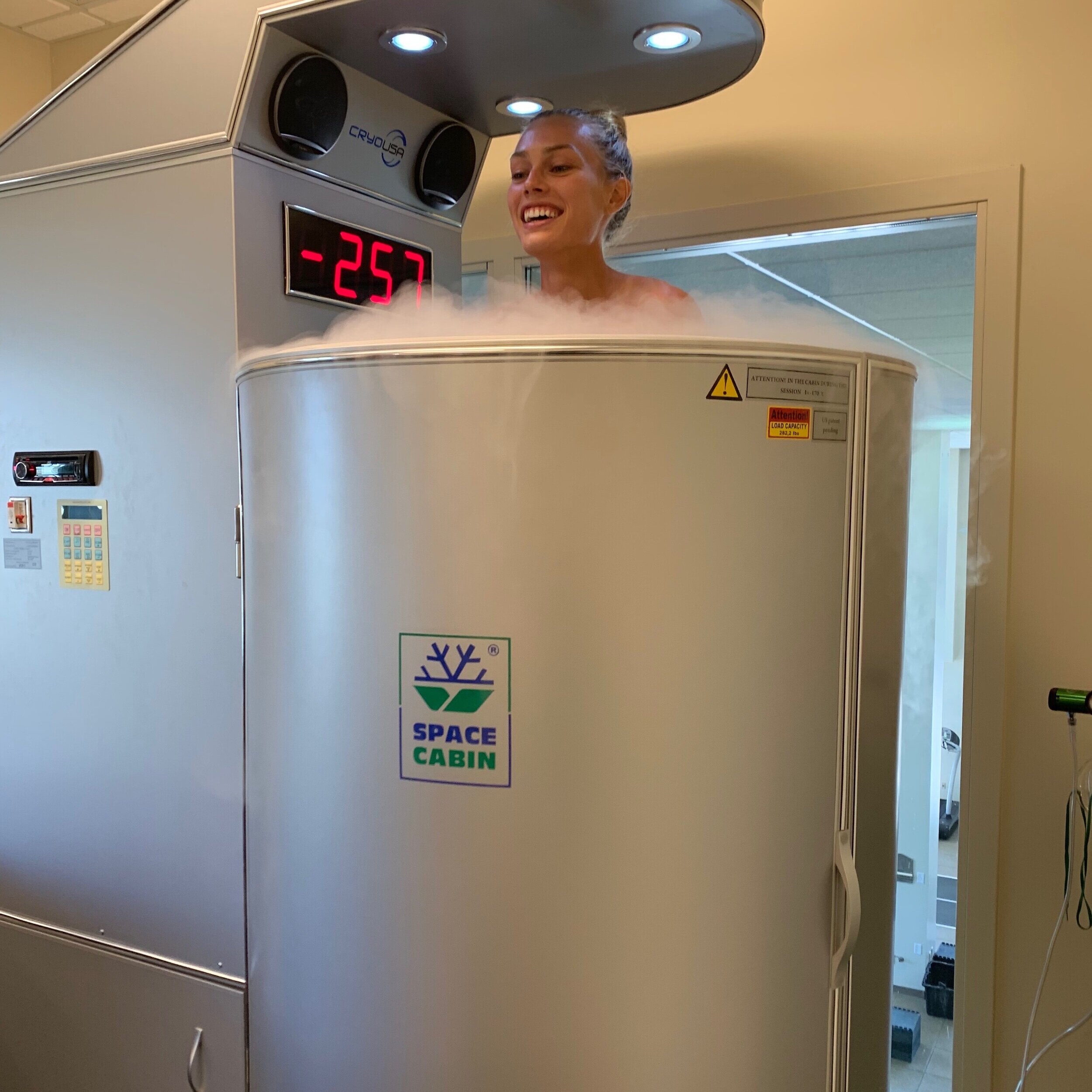Consistency is Key!
While one single workout (however good or bad) doesn't make or break you, stringing together a series of good workouts in a training block leads to a big bump in fitness and often means you're ready for a great race. But sometimes just getting your body recovered from the last workout and ready to crush the next one can be a big challenge. The better you recover, the harder you can run your next workout, and the more you build fitness!
Active recovery
This one often gets overlooked, but sometimes the best remedy for stuff/tight/sore muscles is an easy jog or short cross training session to flush the legs. My favorite way to actively recover? Swimming, of course! Anyone who knows me knows I like to be a mermaid a few times a week for about 30 minutes in the afternoon to get some extra cardio in while flushing the legs from the morning run. There is something healing (for the body AND mind) about swimming. Give it a shot! Read about how I got started swimming here.
2. Massage
I have plenty of tools for self-massage, but sometimes what I really need is a really good massage therapist to really find those tight spots and then dig deep. I get massages 1-2 times per week for an hour each session with a deep tissue sports massage therapist. This is NOT a relaxing, fall asleep kind of massage though, so beware...
3. Cryotherapy
Whether it's full body cryotherapy in a tank (takes 2-5 min) or spot treatment on problem areas, cryotherapy has helped me recover after hard workouts. Some reported benefits include pain relief, reduced inflammation, and muscle recovery. The best part is that it doesn't leave you feeling cold to the bone for hours after like an ice bath. In fact, it is completely safe to cryo and then go for a run right after! Click here if you want to learn more.
4. Flotation Tank
A floatation tank is a rectangular (or sometimes round) tank with a foot or less of water that is nearly saturated with epsom salt. You typically float for 60-90 min with no sound and no light. The idea is that you deprive yourself of all of your senses and are completely supported by the water, allowing your entire body (including your brain) to fully relax. There are lots of mental and physical benefits to floating regularly. You can read more here.
5. ice bath, salt soak, or contrast
Everyone seems to have their own opinions here as to what makes them feel best, so play around with hot or cold or contrast baths to see how you recover best. In the winter I seem to be drawn more to a hot epsom salt bath and in the summer I crave ice baths more. Generally, if I feel stiff and sore I will probably use an epsom salt soak and if I feel pain or inflammation I use an ice bath.
6. Dry needling
Dry needling is like acupuncture, but a little more intense as the practitioner usually moves the needle around a bit once in a pressure point to help the tight muscle release. I have found dry needling VERY effective on the calves, especially when I have dealt with shin splints. If massage isn't enough for you, I'd recommend trying dry needling. If you don't like needles (I hate them), just close your eyes! It doesn't take long.🙈
7. Nutrition and hydration
You all know by now that food is a big part of my day and my recovery regimen. When I don't eat and drink the way I should after a workout, I know I will wake up feeling like 💩 and be kicking myself for a totally avoidable mistake. Water, electrolytes, carbs and protein, people!
Check out my favorite recipes for breakfast, lunch, and dinner on my website. Within 30 min of working out, you'll always find me with a smoothie (my favorite is SmoothieBox), some trail mix, or my homemade date balls to start the recovery process.
8. rest
May seem like a no-brainer, but even I have to remind myself to take naps and get to bed early, especially on hard training days. Lately I've been using a sleep app called "Boost" and I've been really into looking at all the data about my sleep. Another thing I do is I have a practice of meditation with an app called "Headspace" that helps me calm and center myself before bed so that I sleep better. As a pro runner running 70-80 miles per week, I also take an hour nap once or twice a week after a workout or a long run.
9. Normatec
NormaTec sponsors USATF athletes, so I get to travel with my own recovery system wherever I go. I love to lay in my bed with the boots on my legs giving myself a flush that helps my muscles recover faster with increased circulation. The initial cost is higher, but when it can replace other treatment (such as massage) and is travel friendly, I think it is worth the investment. Click here to learn more and use code “STEEPLESQUIGS” for $50 off your purchase!
10. RolLIng and self-massage
Rolling out and using a massage gun are both great everyday ways to keep up maintenance with your body. Hyperice is a partner of mine and some of my favorite products they make are the Hypervolt massage gun and the Vyper vibrating foam roller. The Hypervolt is great because it’s extremely portable and surprisingly quiet. It’s great for spots that I really need to release, like calves. Then the Vyper is great for spots I can’t reach, like my back and neck. Both go with me to practice!







